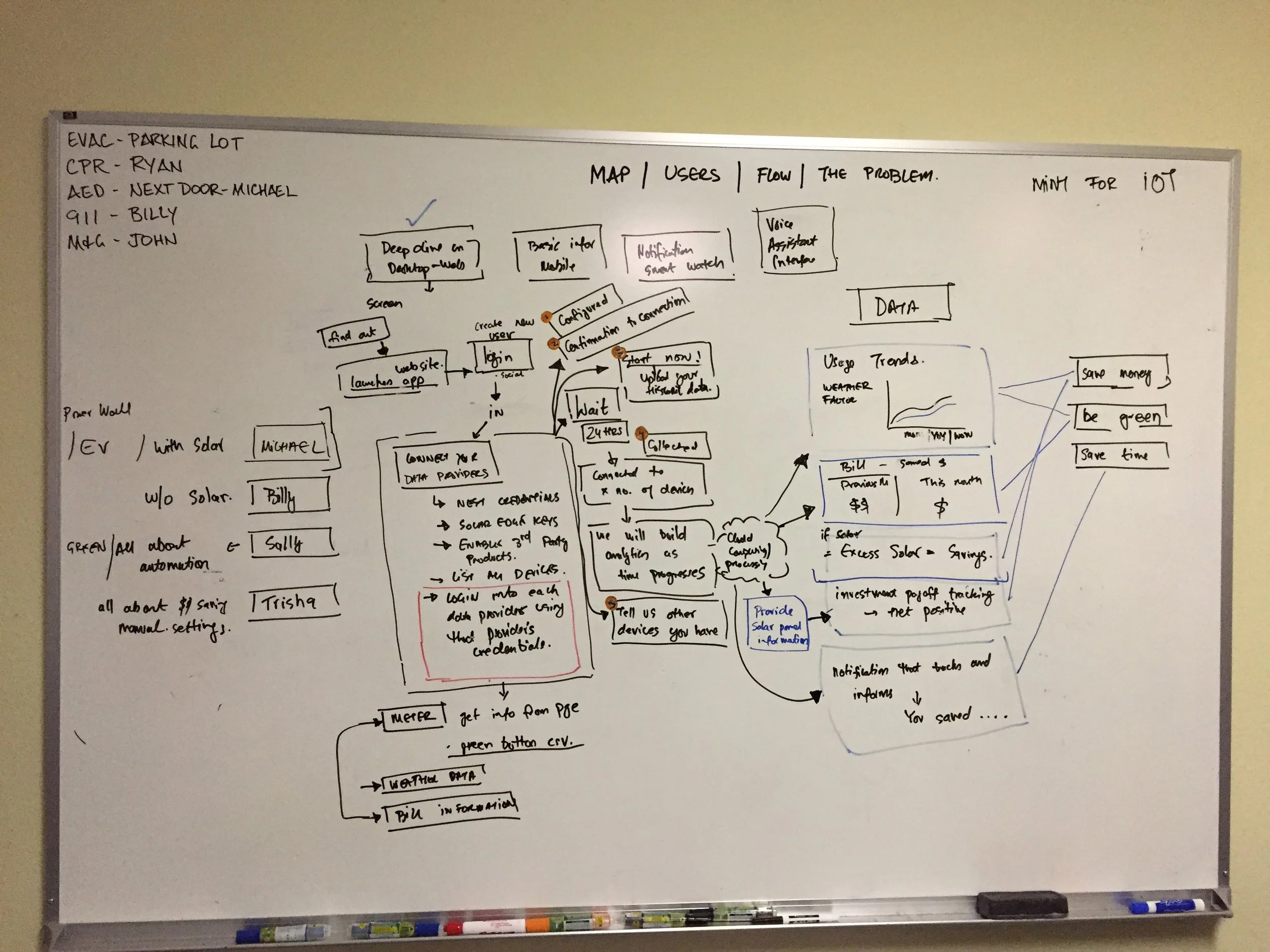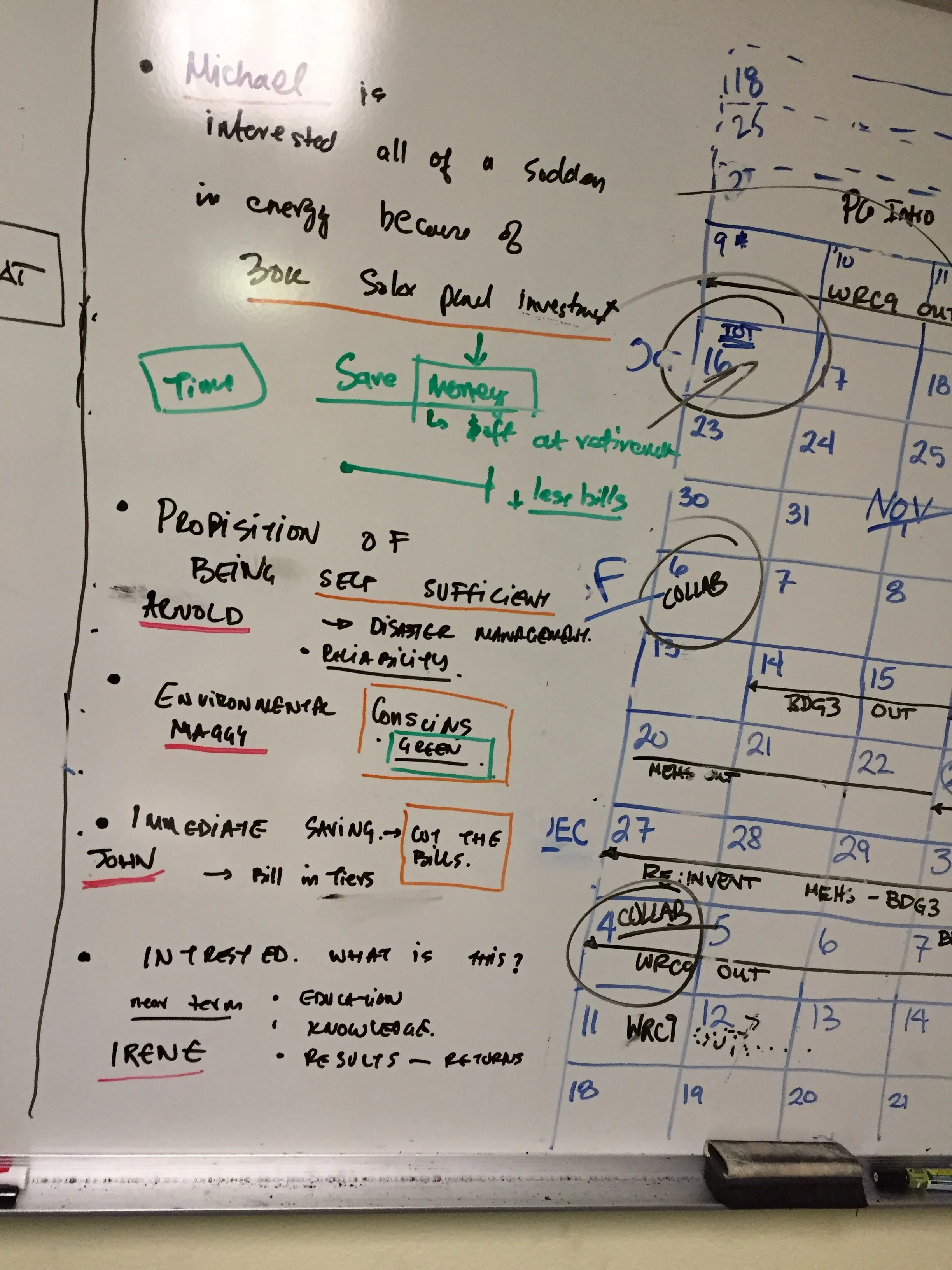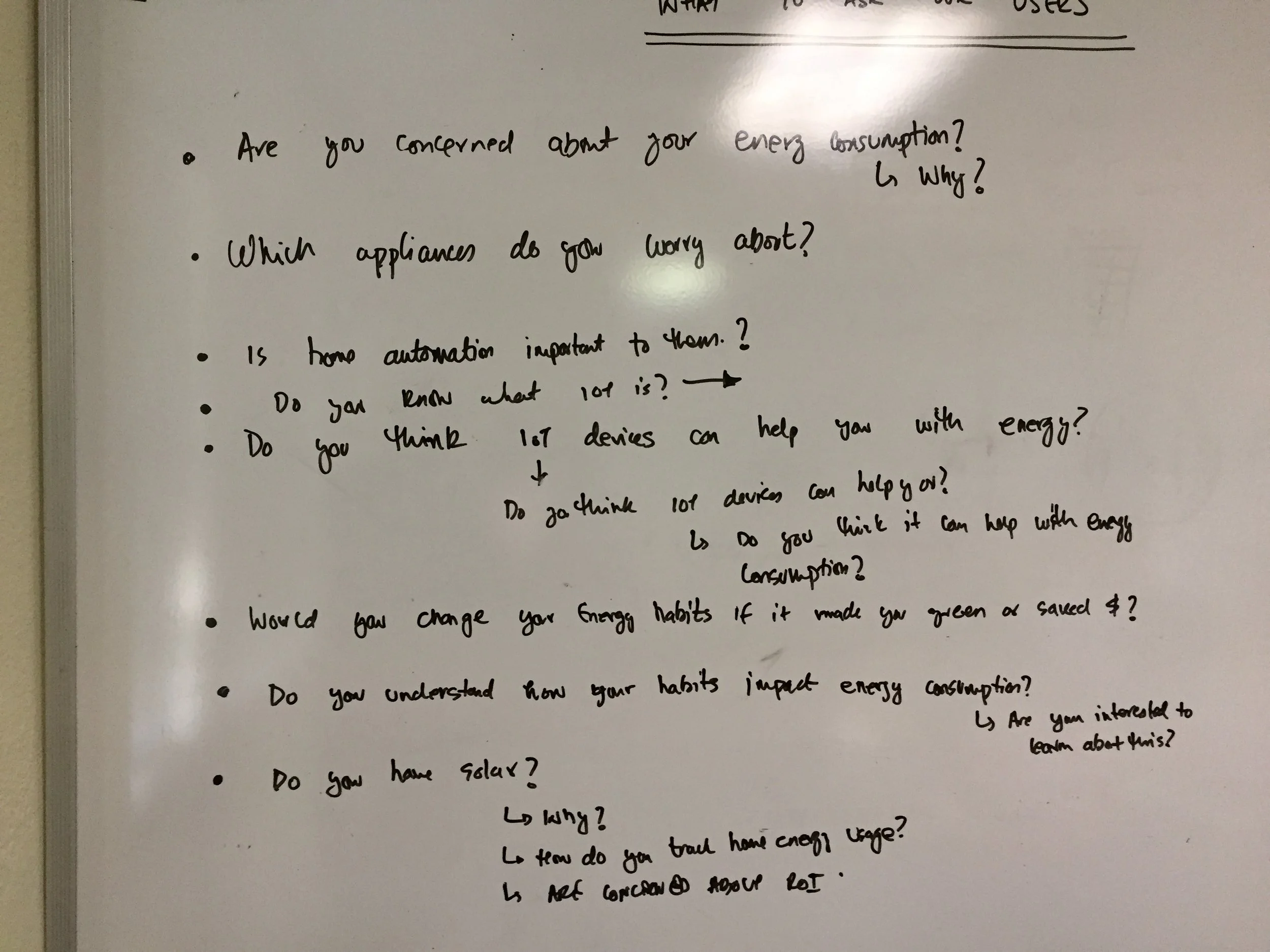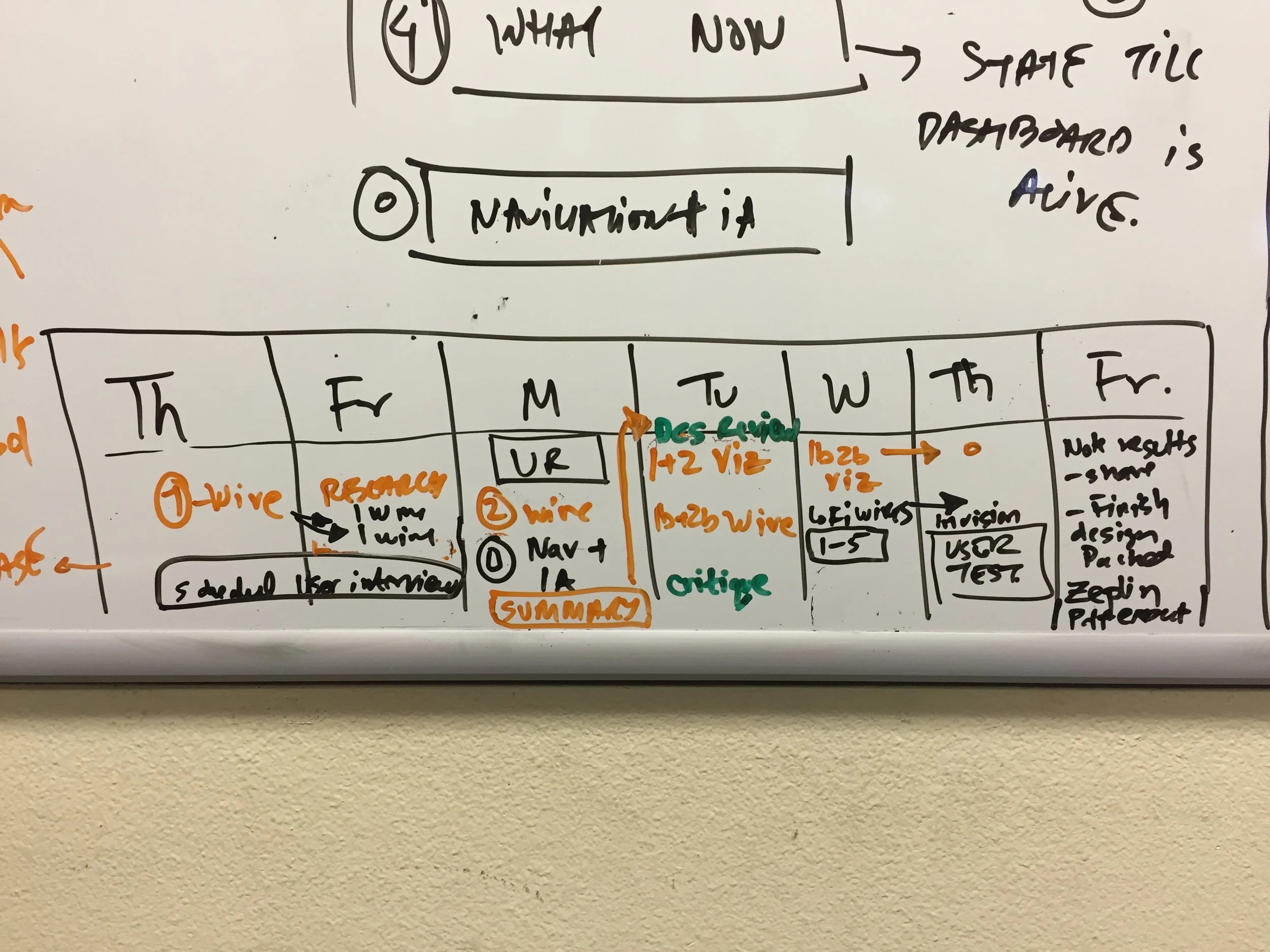Solar Energy Dashboard PG&E Customers
A forward-looking R&D team was looking for a systematic framework to build a futuristic product for solar panel-owning customers. With a series of workshops and interviews, we created a clickable prototype to define the problem statement and vision.
design workshop
What is your Vision?
Who are your users?
Why do these users care?
How can they get to the end?
By the end of the workshop we defined the product and what the product should do. We decided to create an application for customers who owned solar panels at home and wanted to get the most out of their investment. We wanted to help customers connect any smart home technology and products to the application so they could manage and utilize energy in the most beneficial way.
on-boarding
We created a dashboard that would take energy data from the grid, from solar panels and other smart home products to show energy consumption, hourly utilization and surplus that would help customers optimize their energy consumption. In order to make this dashboard effective users had to take steps in order to connect all of these systems together. A strong on-boarding process help the users configure their dashboard and get the most out of this product.
Testing and prototyping the Dashboard
Details mattered. When customers invested in a solar roof at home they understood all aspects that impact their ROI on solar. Weather was one of the biggest influences in solar energy production, we had to make sure that we overlaid this information on our dashboards. We also had to meaningful product categories, high level views and granular views that made sense to the users.
We recruited home owners with solar roofing for testing our dashboard and we learned that most users found this useful. But many indicated that a monthly or weekly time investment to look at this dashboard was going to be challenging due to their busy schedules. Based on this feedback we recommended a design that would email a weekly or monthly report to the customers on what they did well and did not, where they could optimize and how to do it in a concise way. We also recommended an app with smart watch integration that can instantly alert the customer if they should turn an appliance off and use it later to save energy and make recommendations actionable. In effect users wanted to be told what to do not nerd out on data.
































